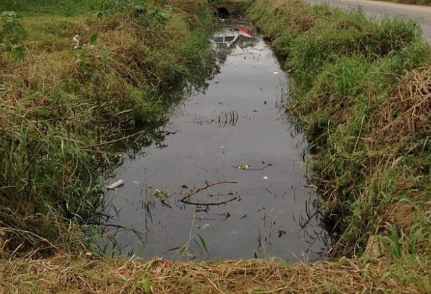Algae are Used to Depollute Sewage and Produce Compost
Published on by Water Network Research, Official research team of The Water Network in Academic
A partnership between Brazilian and Dutch researchers has demonstrated that it is possible to convert black water – the “heaviest” fraction of household waste consisting mainly of a relatively undiluted mixture of feces and urine from toilet flushing – into a sort of alga farm.
Single-cell algae of the genus Chlorella feed on nutrients in this effluent. As they grow, they help to remove the pollutants it contains and simultaneously produce large amounts of biomass for uses such as composting.

Brazilian and Dutch researchers use single-cell algae to try to solve the
problem of managing the waste generated by sewage treatment
(photo: Wikimedia Commons)
The current research results were presented at a workshop held in early September at the University of São Paulo’s São Carlos Engineering School (EESC-USP), with researchers from both sides of the Atlantic in attendance. On the Brazilian side, the partnership receives funding from FAPESP , while European funding comes from the Netherlands Organization for Scientific Research (NWO). The four-year collaborative project is scheduled to end in January 2018.
According to Luiz Antonio Daniel, a professor in EESC-USP’s Department of Hydraulics & Sanitation and one of the coordinators of the partnership, its main objective is to solve the problem of managing the waste generated by today’s sewage treatment processes.
The main components of the feces and urine flushed from toilets include the carbon in organic matter, nitrogen, and phosphorus. When large amounts of waste are dumped in watercourses, nitrogen and phosphorus cause eutrophication – the excessive growth of aquatic microorganisms, especially algae – leading to potentially serious imbalances in aquatic communities and releasing pathogens into the environment.
“In the sewage treatment processes most commonly used today, chemicals remove phosphorus from the water, and what’s left is a sludge that can’t be used for much else. Some Brazilian states ban its use as fertilizer in agriculture, for example” Daniel explained. “The sludge ends up being discharged into landfills. The cost of disposal is therefore considerable.”
Back to the closed cycle
However, the current disposal strategies were not always used. In her presentation to the workshop, Dutch scientist Grietje Zeeman, Emeritus Professor in Wageningen University’s Department of Environmental Technology, showed photographs of the system used to collect human waste in barrels in the Netherlands in the nineteenth and twentieth centuries, and the system was deactivated only in the early 1980s.
Fecal matter and urine collected from households were used as fertilizer by Dutch farmers back then. “With the system we have today, which can be called ‘flush and forget’, this nutrient reuse cycle has been lost. Our idea is to close the cycle again,” Zeeman said.
To attain this goal, the first step entails decentralizing sewage collection to prevent the dilution of black water and the nutrients in feces and urine.
“It wouldn’t be necessary to decentralize excessively. We needn’t treat the sewage of each home or building separately. We could have units serving a few thousand inhabitants, up to some 10,000,” Daniel estimated.
“Because approximately 50% of Brazilian towns have fewer than 10,000 inhabitants and only 25% have sewage treatment systems, many localities can introduce such systems from scratch.”
Read full article: FAPESP
Media
Taxonomy
- Wastewater Disposal
- Wastewater Use
- Reclaimed Wastewater
- Wastewater Phycoremediation
- Wastewater Treatment
- Wastewater Collection
- Integrated Water Management
- Water Management
- Water Resource Management